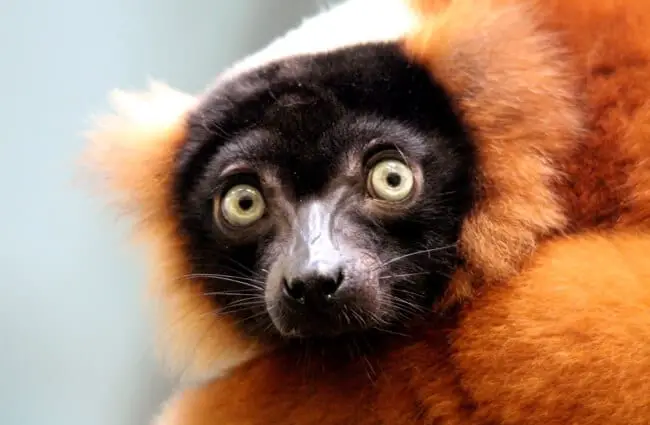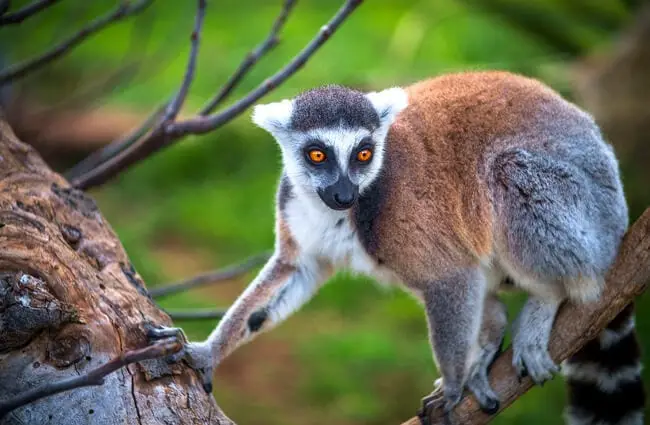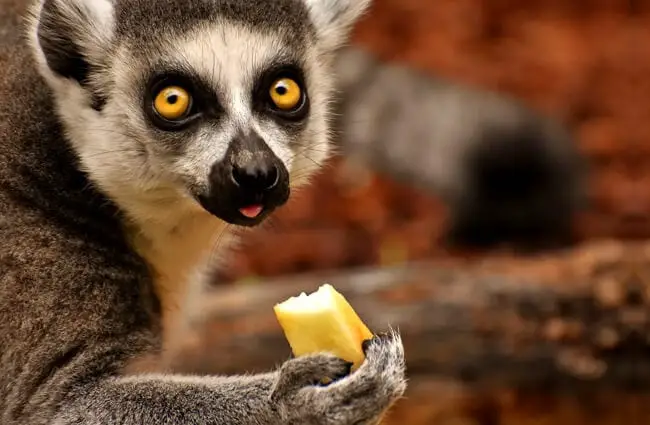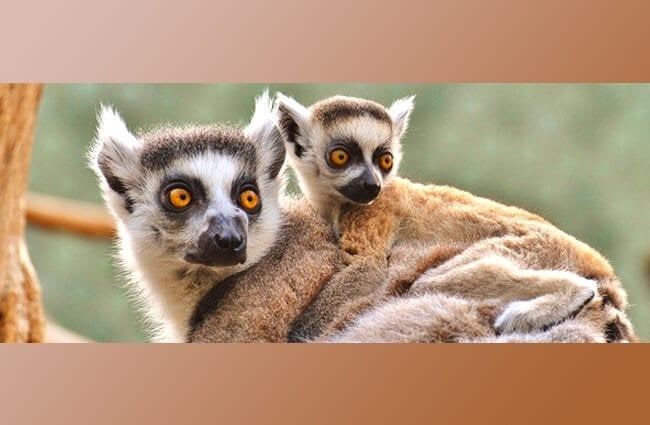An Introduction to Lemurs: The Primates of Madagascar
Lemurs represent a fascinating and unique group of primates found exclusively on the island of Madagascar. These captivating creatures, often characterized by their large eyes and long tails, hold a special place in the animal kingdom. Their story is one of isolation, adaptation, and increasingly, conservation concern. Understanding lemurs requires delving into their biology, behavior, and the critical role they play within their fragile ecosystem.

What Are Lemurs?
The name “lemur” derives from the Roman belief in spirits that haunted the night, aptly describing their nocturnal habits and elusive nature. However, lemurs are very real, and incredibly diverse. There are over 100 species and subspecies currently recognized, ranging in size from the Madame Berthe’s mouse lemur, one of the smallest primates on Earth, to the indri, which can weigh over 20 pounds. They belong to the suborder Strepsirrhini, distinguished from the “higher” primates (monkeys, apes, and humans) by possessing a moist nose (rhinarium), a greater reliance on scent, and a toothcomb, specialized lower incisors and canines used for grooming.
Habitat and Distribution
Madagascar is the sole natural habitat for all lemur species. This isolation has allowed them to evolve into a remarkable array of forms adapted to the island’s varied environments. Lemurs occupy a wide range of habitats including rainforests, dry deciduous forests, spiny forests, and even swamps. Some species are highly specialized to particular niches, like the bamboo lemurs which have adapted to feed almost exclusively on bamboo, while others are more generalized in their dietary habits. Their distribution across the island is uneven, with certain species restricted to very small geographic areas, making them particularly vulnerable to habitat loss.

Finding Lemurs in the Wild
For those seeking to observe lemurs in their natural habitat, Madagascar offers several prime locations. Andasibe-Mantadia National Park is a popular choice, known for its easily observed indris and common brown lemurs. Ranomafana National Park offers a greater diversity of species, including golden bamboo lemurs and Milne-Edwards’ sifakas. Kirindy Forest is ideal for spotting nocturnal lemurs like the Goodman’s mouse lemur. When visiting, it’s crucial to employ local guides who understand lemur behavior and can help you locate these elusive creatures while minimizing disturbance. Remember to maintain a respectful distance and avoid any direct contact.
Lemur Diet and Feeding Habits
Lemur diets are remarkably diverse, reflecting the varied habitats they occupy. While many species are primarily frugivorous (fruit-eating), consuming a wide range of fruits, leaves, flowers, and nectar also form an important part of their diet. Some lemurs, like the ring-tailed lemur, supplement their diet with insects and even small vertebrates. The bamboo lemurs, as mentioned earlier, represent a particularly specialized case, relying heavily on bamboo shoots and leaves, even those containing cyanide compounds which they have adapted to detoxify. Their feeding habits play a crucial role in seed dispersal and forest regeneration.

Social Behavior and Reproduction
Lemur social structures are equally varied. Some species, like ring-tailed lemurs, live in large, complex social groups led by dominant females. These groups exhibit intricate social hierarchies, scent marking, and vocal communication. Others, like the indri, live in small family groups consisting of a monogamous pair and their offspring. Many species are nocturnal, relying on scent and vocalizations for communication in the dark.
Reproduction typically occurs seasonally, with females giving birth to one or two offspring after a gestation period ranging from 90 to 150 days, depending on the species. Infants are often carried by their mothers for several months, clinging to their fur. Parental care is crucial for survival, with mothers providing protection and teaching their offspring essential skills.

Ecological Role and Interactions
Lemurs are keystone species in Madagascar’s ecosystems. As seed dispersers, they play a vital role in maintaining forest diversity and regeneration. Their foraging activities also influence the distribution of plants and insects. They interact with a variety of other animals, including birds, reptiles, and insects, forming complex food webs. Some species, like the ring-tailed lemur, are known to engage in allogrooming, a behavior where they groom each other, strengthening social bonds and maintaining hygiene.
Lemurs and Humans
Unfortunately, lemurs face significant threats from human activities. Habitat loss due to deforestation, agriculture, and logging is the primary driver of their decline. Hunting for bushmeat, particularly in the more remote areas of Madagascar, also poses a threat. Additionally, the illegal pet trade contributes to the depletion of lemur populations.
Conservation efforts are crucial to ensure the survival of these unique primates. These include establishing protected areas, promoting sustainable forestry practices, combating poaching, and educating local communities about the importance of lemur conservation. Responsible tourism can also play a positive role by providing economic incentives for conservation.
A Zookeeper’s Guide to Lemur Care
Caring for lemurs in captivity requires a deep understanding of their complex needs. Enclosures should be spacious and enriched with climbing structures, vegetation, and foraging opportunities to stimulate their natural behaviors. Diet should be varied and balanced, mimicking their natural diet in the wild. Regular veterinary checkups are essential to monitor their health. Social interaction is crucial, so lemurs should be housed in compatible groups. Strict hygiene protocols are necessary to prevent the spread of disease. Avoid excessive human interaction, as it can lead to stress and behavioral problems.
Interesting Facts about Lemurs
- Lemurs are found exclusively on the island of Madagascar.
- There are over 100 species and subspecies of lemurs.
- The smallest lemur, Madame Berthe’s mouse lemur, weighs less than an ounce.
- Lemurs have a specialized toothcomb used for grooming.
- Ring-tailed lemurs communicate using scent glands and vocalizations.
- Some lemurs can leap distances of up to 30 feet.
- Bamboo lemurs can detoxify cyanide found in bamboo.
- Lemurs play a vital role in seed dispersal and forest regeneration.
- Many lemur species are critically endangered due to habitat loss and hunting.


Conclusion
Lemurs are more than just fascinating primates; they are an integral part of Madagascar’s unique biodiversity and a powerful symbol of the importance of conservation. Their story is a reminder that the fate of these incredible creatures is inextricably linked to our own, and that protecting them requires a concerted effort from individuals, communities, and governments alike. By understanding their biology, behavior, and the threats they face, we can work towards a future where lemurs continue to thrive in their natural habitat for generations to come.

![Red Angus Closeup of a beautiful Red Angus cowPhoto by: U.S. Department of Agriculture [pubic domain]https://creativecommons.org/licenses/by/2.0/](https://animals.net/wp-content/uploads/2020/03/Red-Angus-4-238x178.jpg)




![Red Angus Closeup of a beautiful Red Angus cowPhoto by: U.S. Department of Agriculture [pubic domain]https://creativecommons.org/licenses/by/2.0/](https://animals.net/wp-content/uploads/2020/03/Red-Angus-4-100x75.jpg)

